If you want to include the moon in the image, you have to remember that it is a sun-lit object, so it is going to be quite bright and require an exposure similar to what you would use on other sun-lit objects during the day. Use approximately the "sunny 11 rule": expose at f11 at 1/film speed. So, if using ASA 100 film, shoot at f11 at 1/125 or equivalent settings to get this exposure amount. See the tip on Reciprocity for getting equivalent settings.) But that is going to render everything else in the image black.

 To get a shot with the moon in the landscape, plan your shot for when the moon is just rising or setting, and there is a lot of ambient light to illuminate the landscape. Be careful with long exposures, tho. The moon moves, and after several seconds, you will see blurring because of this movement. Try to keep the exposure under about 30 seconds.
To get a shot with the moon in the landscape, plan your shot for when the moon is just rising or setting, and there is a lot of ambient light to illuminate the landscape. Be careful with long exposures, tho. The moon moves, and after several seconds, you will see blurring because of this movement. Try to keep the exposure under about 30 seconds.
You could also try a double exposure. Three of the possible ways to do this :
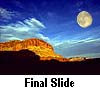
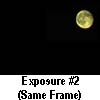
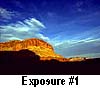
View Beautiful sample Photography of the Moon that shoot by some great photographer
word by by Theresa A. Husarik from wildthingsphoto.com

 To get a shot with the moon in the landscape, plan your shot for when the moon is just rising or setting, and there is a lot of ambient light to illuminate the landscape. Be careful with long exposures, tho. The moon moves, and after several seconds, you will see blurring because of this movement. Try to keep the exposure under about 30 seconds.
To get a shot with the moon in the landscape, plan your shot for when the moon is just rising or setting, and there is a lot of ambient light to illuminate the landscape. Be careful with long exposures, tho. The moon moves, and after several seconds, you will see blurring because of this movement. Try to keep the exposure under about 30 seconds.You could also try a double exposure. Three of the possible ways to do this :
- Double Exposure Option #1 - In The Camera
- Set your camera for multiple exposures (On my camera, you dial in the number of exposures you want. In this case, you want 2).
- Take a shot at dusk to properly expose the landscape. It is important to keep the lighting of the rest of the scene consistent with a shot that would have the moon in it. The image wouldn't look right if the landscape were day-lit with a moon stuck in the sky.
- LEAVE THE CAMERA ON THE TRIPOD AND IN PLACE. After the moon has risen and the rest of the scene is dark, take another exposure on the same frame
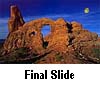
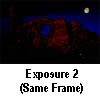
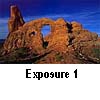 exposing for the moon. The small amount of additional exposure will not affect the landscape that is now in the dark!
exposing for the moon. The small amount of additional exposure will not affect the landscape that is now in the dark!
- Double Exposure Option #2 - In The Camera
- Set your camera for multiple exposures (2).
- Take a shot at dusk leaving room in the frame for placement of the moon.
- Take another shot (on the same frame) of just the moon later. You can use a telephoto lense to make the moon bigger, but be careful to place the moon in the



- Multiple Exposure Option #3 - Sandwich in the Darkroom
- Take a shot at dusk leaving room in the frame for placement of the moon.
- Take another shot (on another frame) of just the moon later. Sandwich the two frames in the darkroom (either a traditional darkroom, or a digital darkroom).
View Beautiful sample Photography of the Moon that shoot by some great photographer
word by by Theresa A. Husarik from wildthingsphoto.com
















